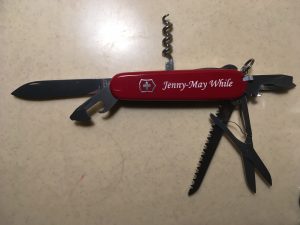These are notes from a class I participated in at RIMYI during December 2019, which might be of interest to Iyengar yoga teachers and practitioners.
3.12.19 Prashant
The parts in italics are paraphrased, and necessarily represent my subjective understanding of what was taught. Although the list of postures is complete to the best of my knowledge, the comments are very incomplete; just the bits that I picked up and which stuck (with some helpful reminders from friends). They do not necessarily relate directly to the pose they come after- we were working on the asanas in rotation and his discourse could have been inspired by anything he saw happening in the room. I am planning on purchasing the recordings they are now offering of Prashant’s classes, as there is so much he says that I will have forgotten already, or not registered or understood the first time around. So these notes may well get an update once I can listen to the class again!
- Swastikasana for invocations
- Swastikasana Do swastikasana as an asana. Not only somehow to sit for the invocations. That is very important. But now as an asana where is the aspect of awareness, sensitivity, observation? Swastikasana from the base of the trunk. From mulha bandha. So what is the base? It is the support. The support of what? Of these aspects of awareness, sensitivity and all the processes of body mind breath.
- Parsva swastikasana
- Adho mukha swastikasana In the asana there is function and there is conditionality. What is the relationship? You put the body in a certain condition, and what are the resulting functions? Or there are functional processes occuring- what are the conditions that enable those?
- Sirsasana
- Utthita trikonasana (foot to wall, holding rope, hand on brick) When we build a building, we create foundations. What are the foundations of a building there to support? They sustain a structure. The structure of the building. But what is the function of the building? This is a place for learning yoga, but in 200 years maybe it will be a community centre, or a music academy, or somewhere where people meet to play cards and carom board. The structure is sustained, but the functionality has endless possibilities. In yogasana we are creating and sustaining a structure and observing the functions within it.
- Supta baddha konasana
- Upavistha konasana Look at the picture of Tadasna. We put the body-mind in the condition of Tadasana. That is the structure. But what are the potential functions? They are endless.
- Parsva upavistha konasana
 Utthita hasta padangusthasana 2 (lateral, foot supported) Like a Swiss-Army Knife. If you tell someone about the Swiss-Army Knife they will think it is a military knife from Switzerland. You have to open it out and see all the possible functions within the structure in order to understand its potential.
Utthita hasta padangusthasana 2 (lateral, foot supported) Like a Swiss-Army Knife. If you tell someone about the Swiss-Army Knife they will think it is a military knife from Switzerland. You have to open it out and see all the possible functions within the structure in order to understand its potential. - Rope sirsasana I wonder why humans are classed as the most intelligent creatures. OK we are the most intelligent creatures ut we are also the most foolish. We are so easily fooled. If there was a big advertisement for fodder, would a cow see it and think ‘Oh I must go and get that type of fodder’? No. It would be happy with what it has. But if there is a big advertisement for anything, say boot polish, a human being will immediately think ‘Oh, I must go and buy that one’. I wonder that we are apparently so intelligent and yet so foolish.
- Bharadvajasana 1 As yoga practitioners we have to study linguistics. This is very important. Language is indicative of condition and function. We understand through language. For example, we can say someone is spineless. We understand what that means. Why then do we not refer to someone who is ‘spineful’? Would you not rather place your trust in someone who was spineful rather than spineless? Those aspects of honesty, compassion, integrity, courage etc etc built up from the base of the spine.
- Bharadvajasana 2 Sometimes people will say, oh I can’t do this or I can’t do that because of this or that genetic problem, this or that hereditary problem. We use this genealogy to say we can’t do. But what about the things we think we can do well? We never say ‘oh I am good at that because my grandfather was very good at it’. We are happy to say that it’s because we studied hard and we ourselves became wiser or more proficient. So why use genetics in one case and not the other?
- Supta virasana The pose has a root, a base, a certain condition, but what about the route r-o-u-t-e? This is the functionality, the route r-o-u-t-e of body mind breath. Follow the route from the root.
- Virasana Do whichever pose you are in from mulha bandhasana. That is the condition. Condition of pelvis, condition of spine, condition of breath, condition of mind.
- Sarvangasana and halasana or sethu band sarvangasana (with brick)
- Savasana
